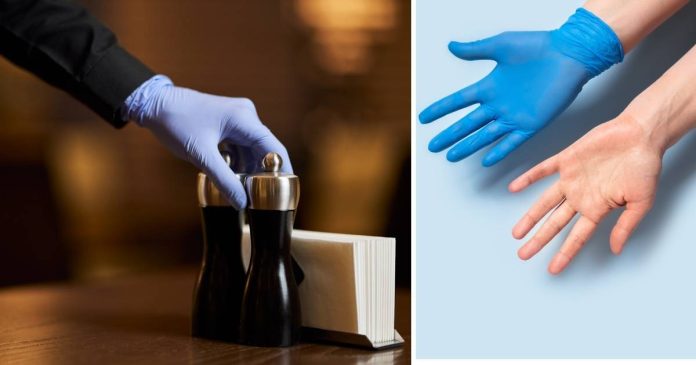A food handler must wear single-use gloves when:
- Handling Ready-to-Eat Foods: Gloves are required when preparing or serving foods that will not be cooked further (such as salads, fruits, sandwiches, or pastries) to prevent contamination.
- Handling Raw Meat, Poultry, or Seafood: Gloves are essential when touching raw animal products like meat, poultry, fish, or seafood to prevent cross-contamination with other foods.
- Handling or Preparing Foods that Require Direct Contact: When food is prepared in a way that involves direct hand contact, such as forming dough, rolling sushi, or handling baked goods.
- Cleaning and Sanitizing: Gloves should be worn when cleaning food prep areas, utensils, or surfaces that may have come into contact with food.
- Infected or Unhealthy Skin Conditions: Food handlers who have cuts, rashes, or any other visible skin infection on their hands should wear gloves to avoid the risk of contamination.
- Handling High-Risk Foods: Certain foods like dairy, eggs, or deli meats that are more prone to bacteria growth should be handled with gloves to minimize the risk of foodborne illness.
Important Notes:
- Glove changes: Gloves should be changed frequently, especially after handling raw foods, using the restroom, or touching anything that may contaminate them.
- Washing hands: Even with gloves, hands should be washed thoroughly before and after using gloves, as gloves do not replace the need for handwashing.
By following these guidelines, food handlers can reduce the risk of contamination and ensure food safety.



